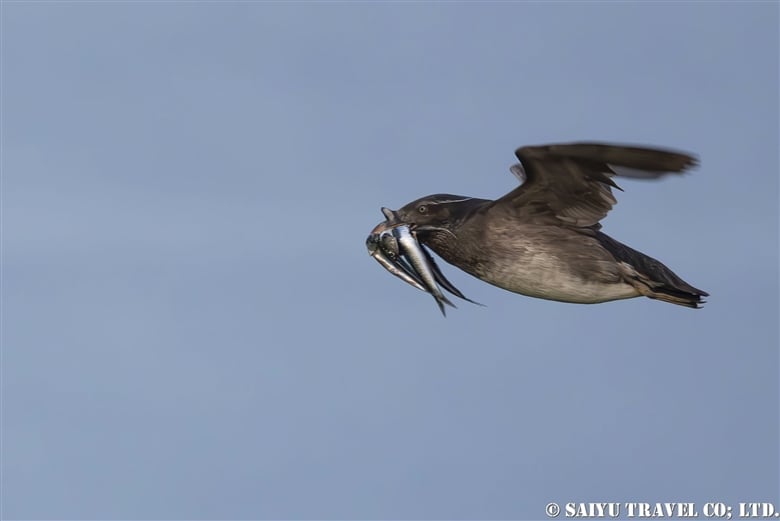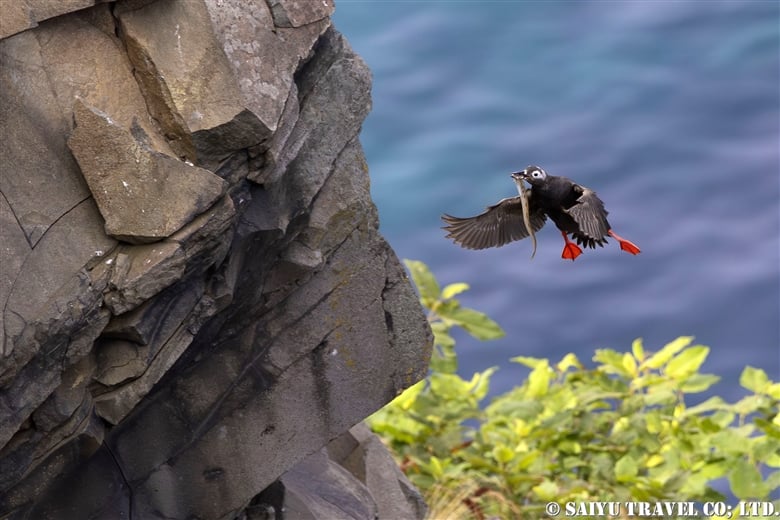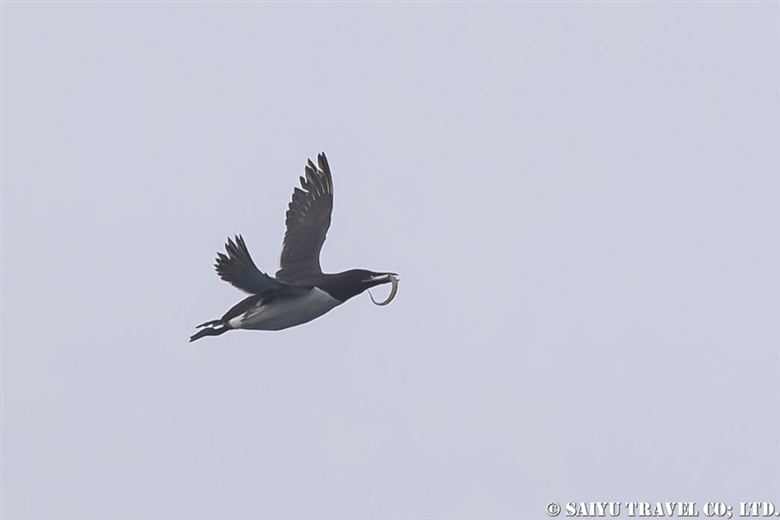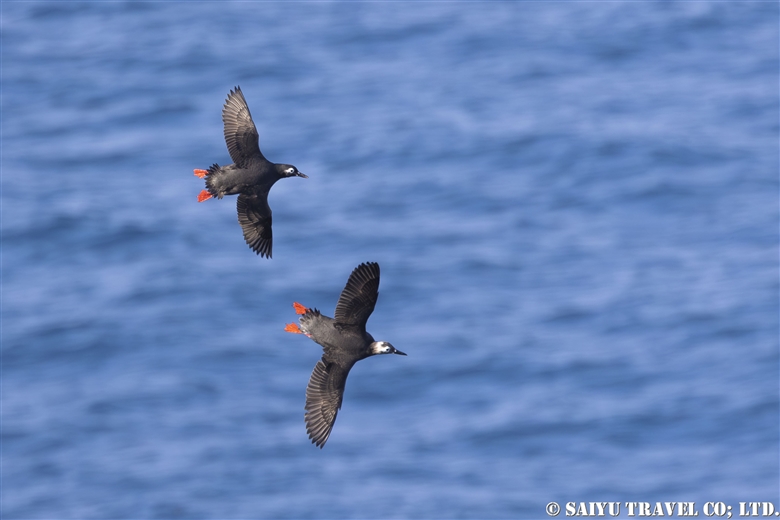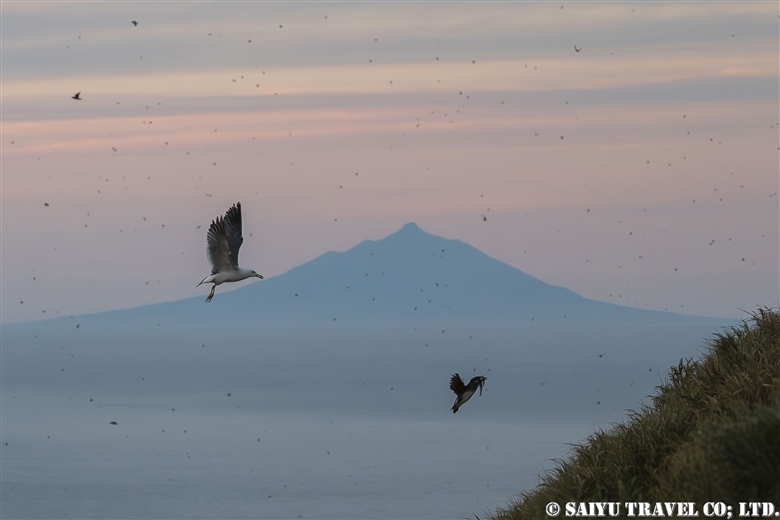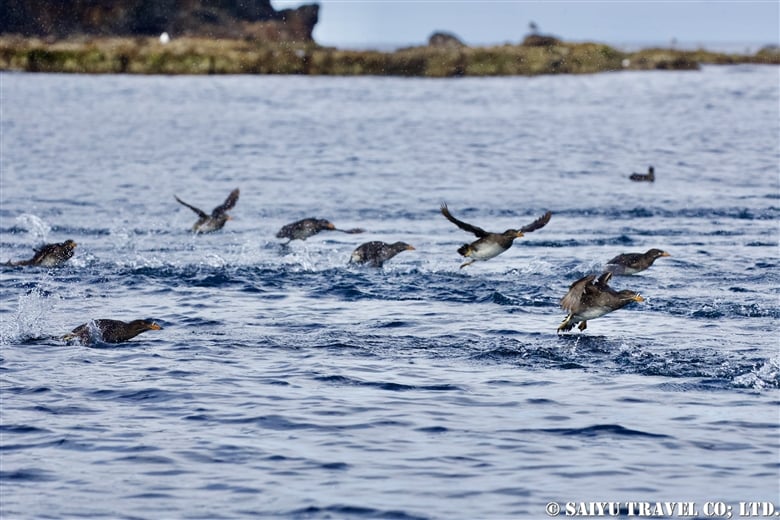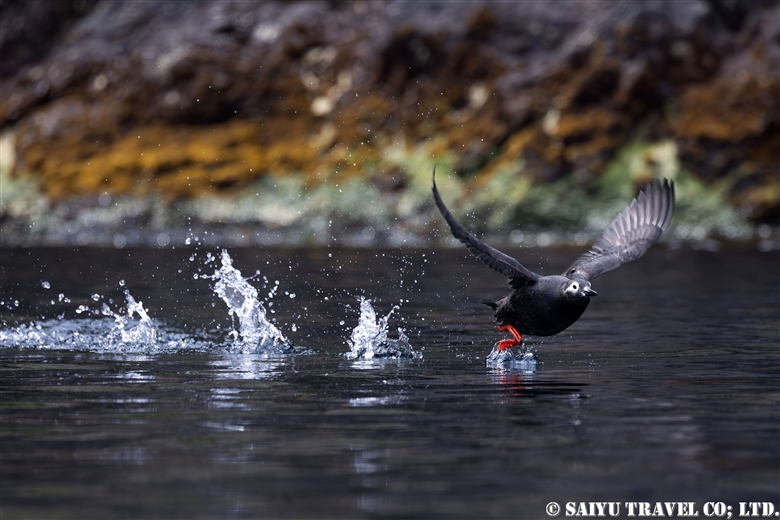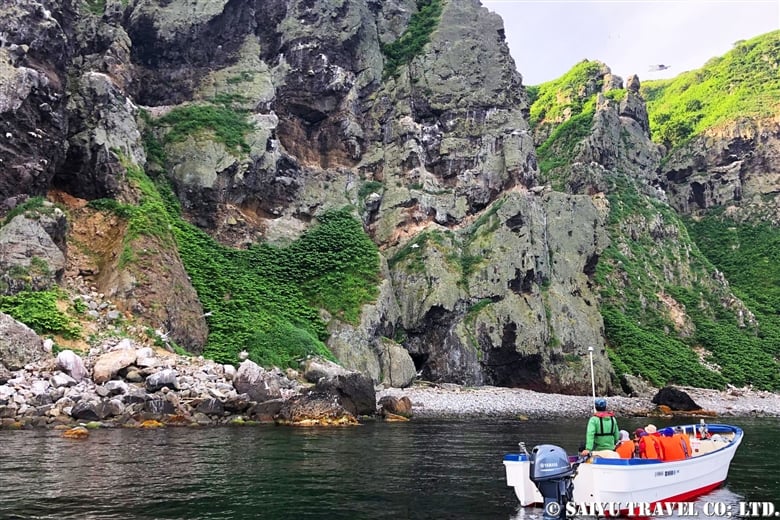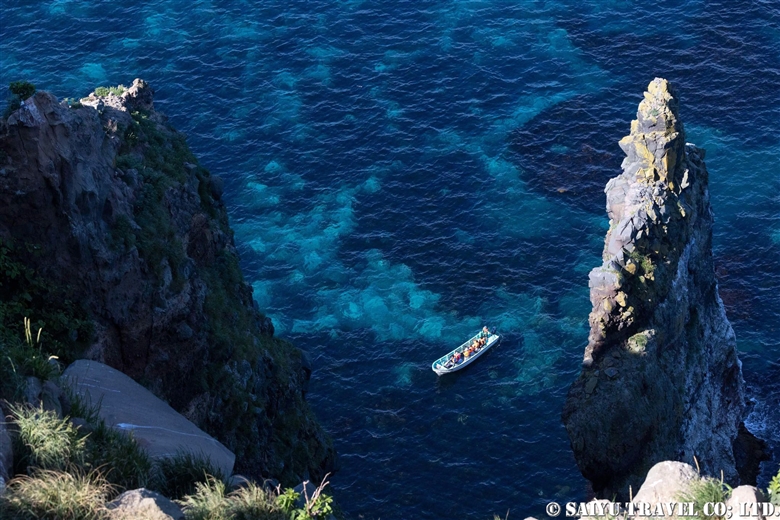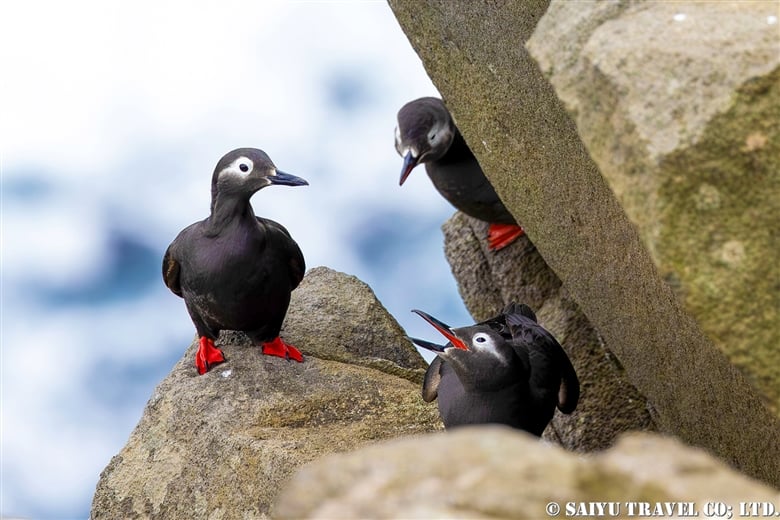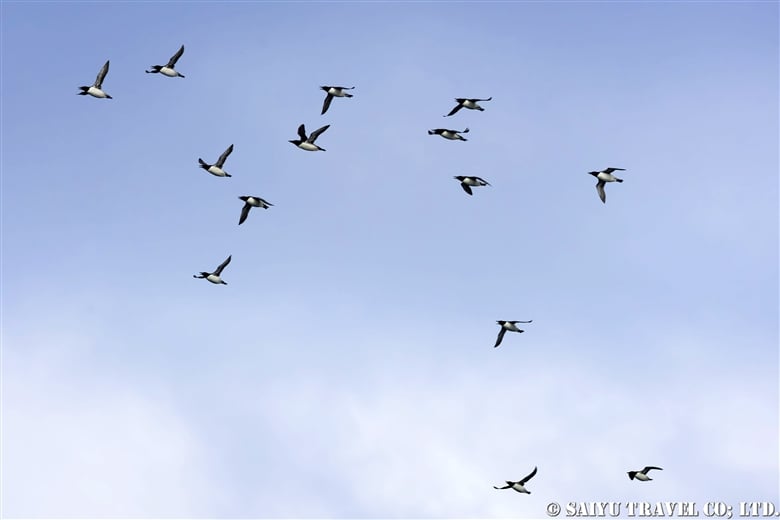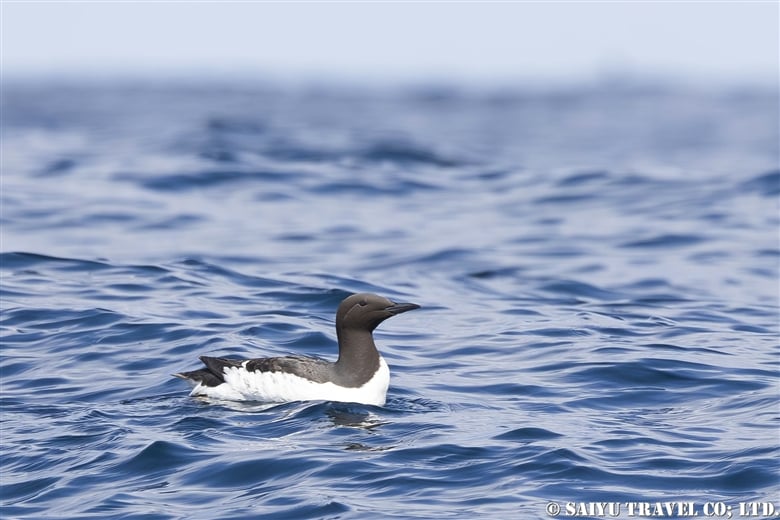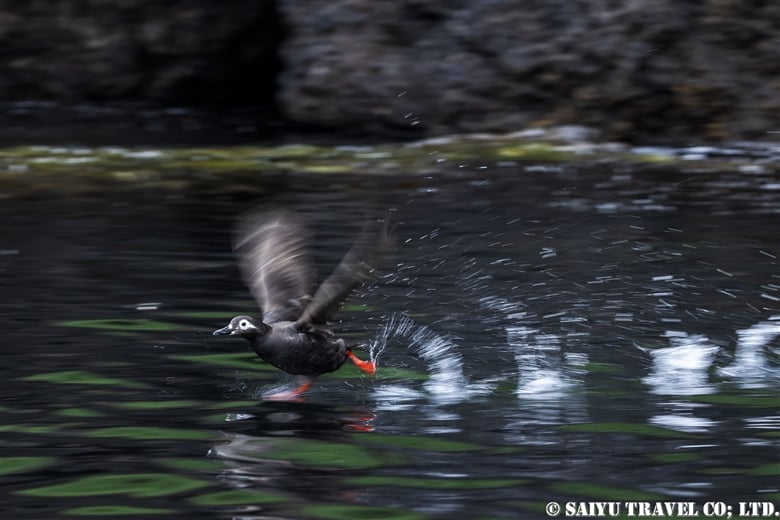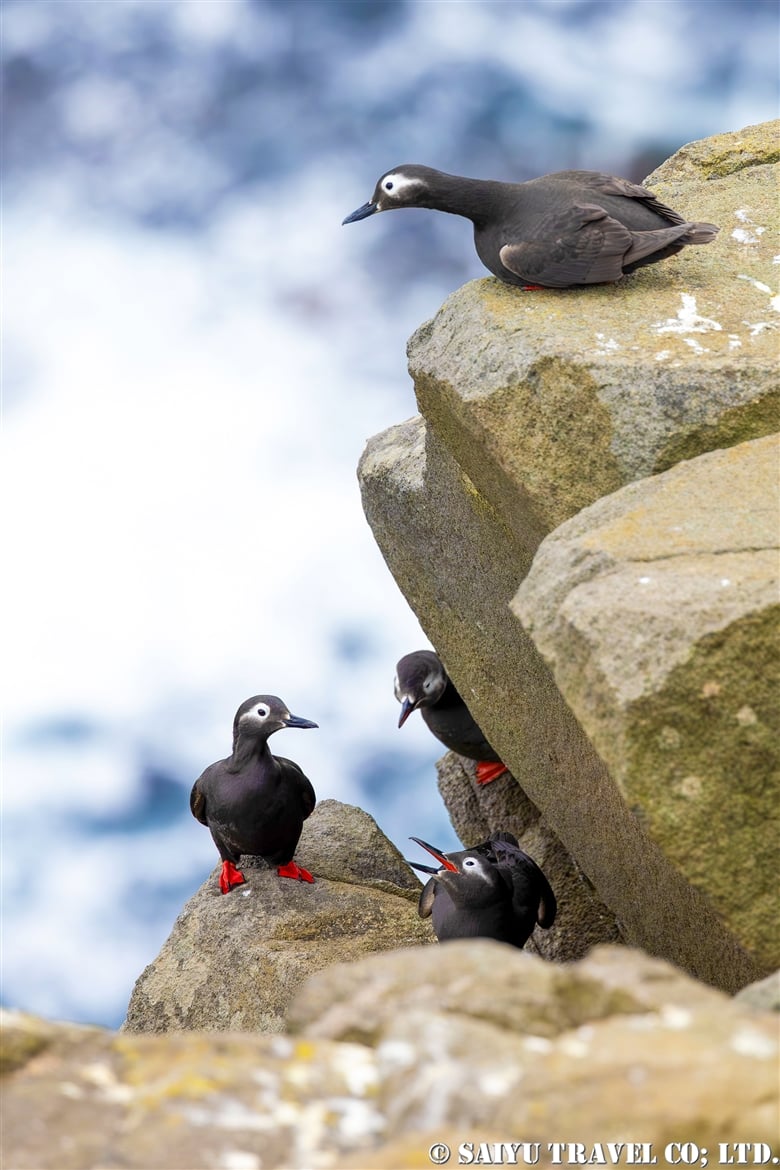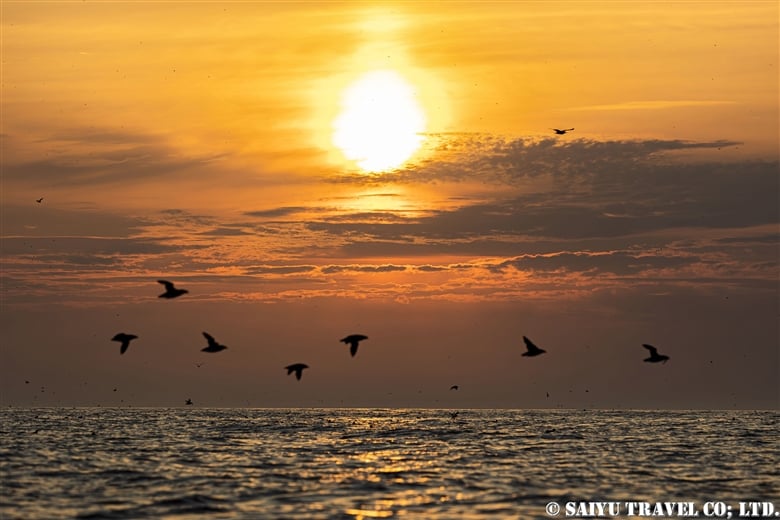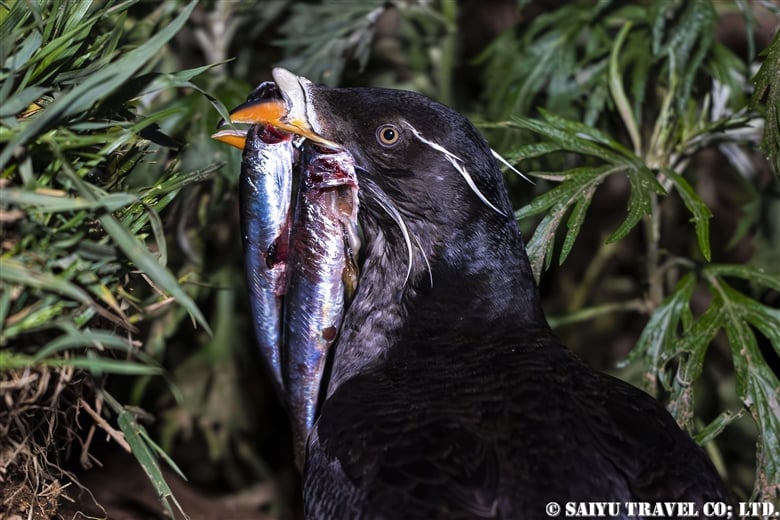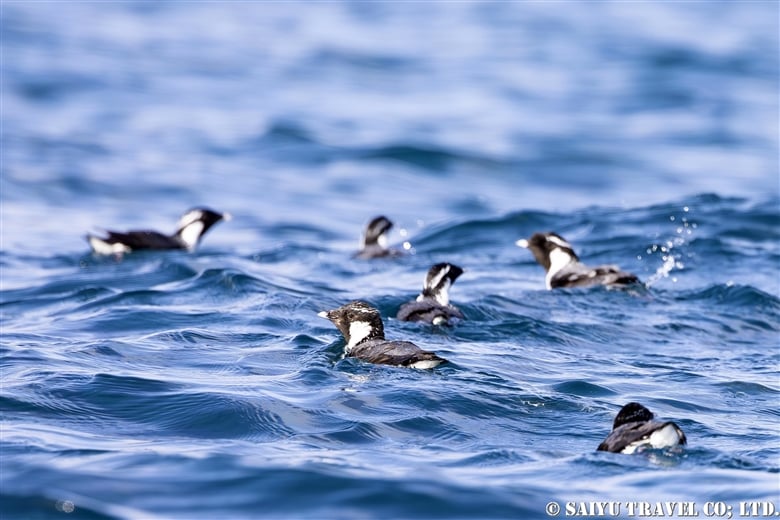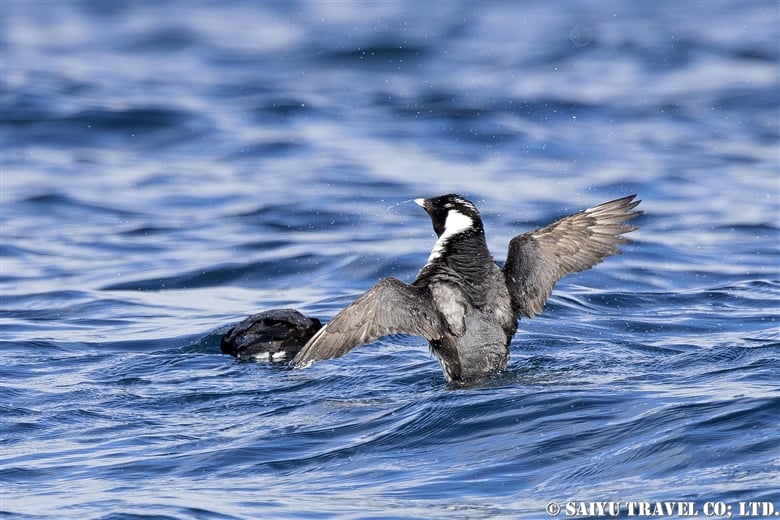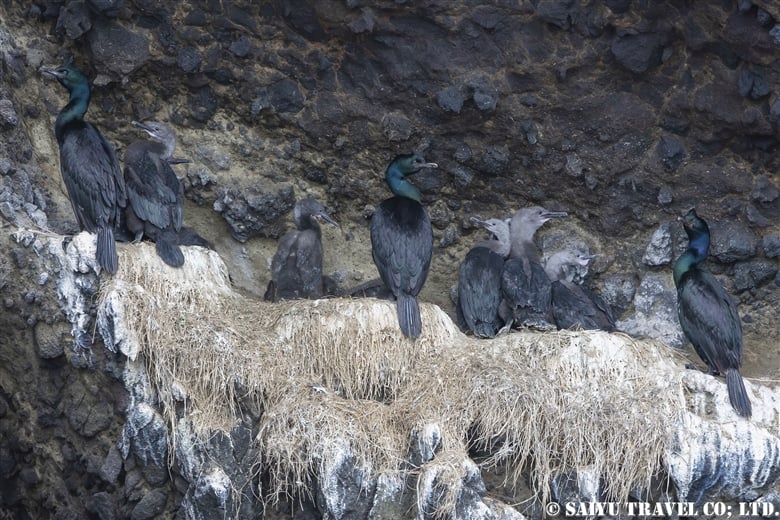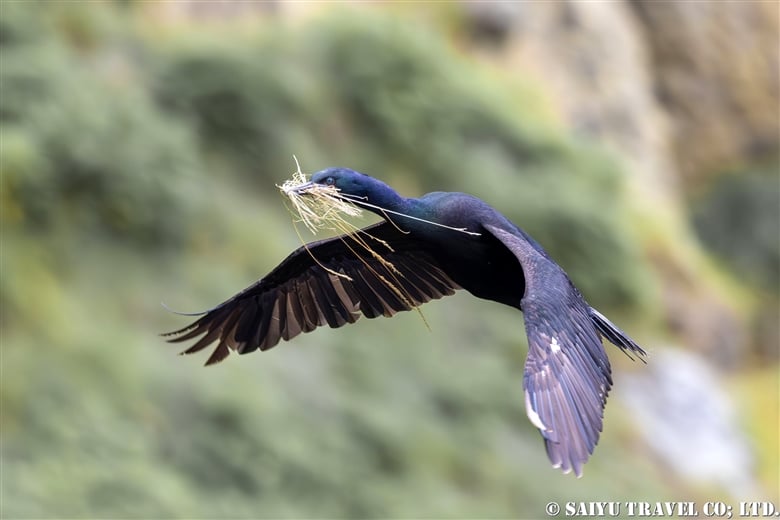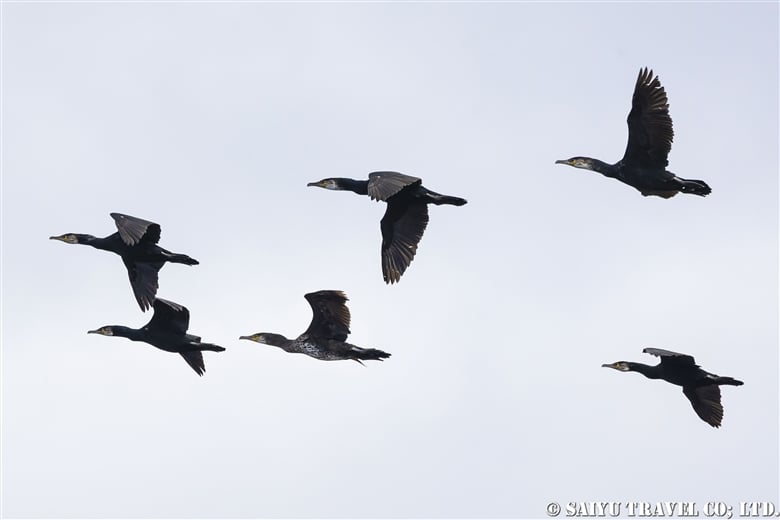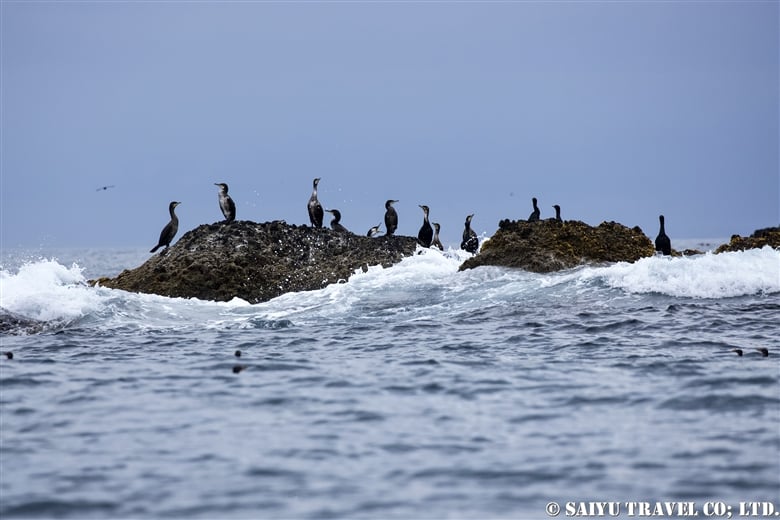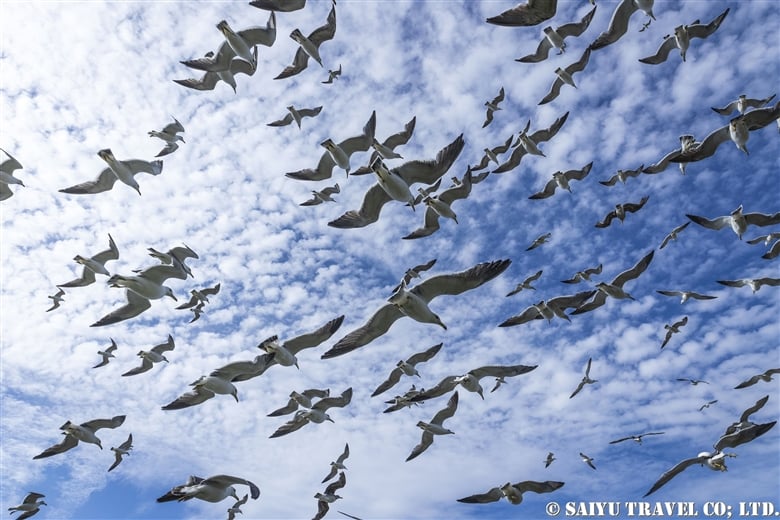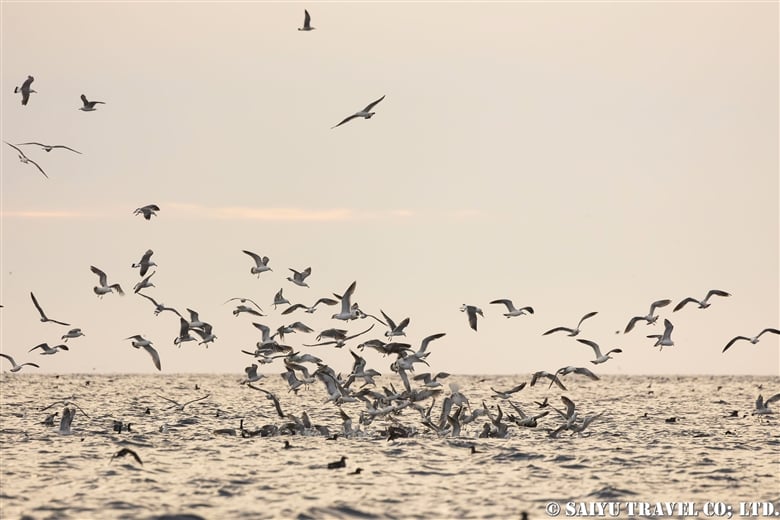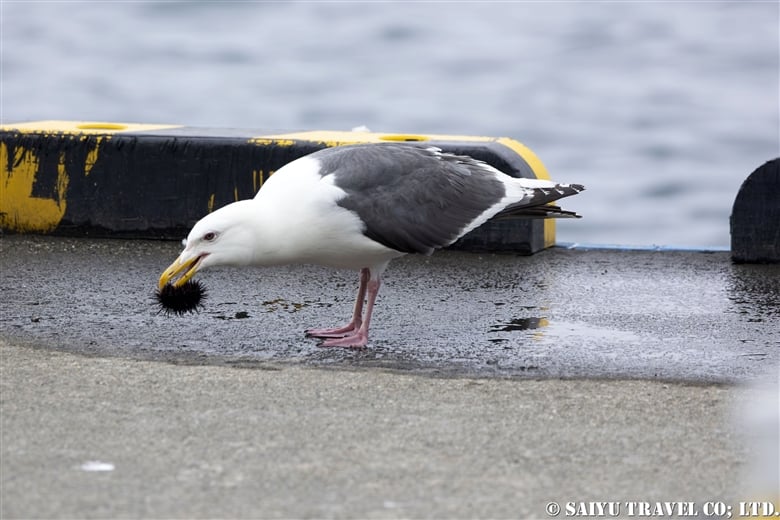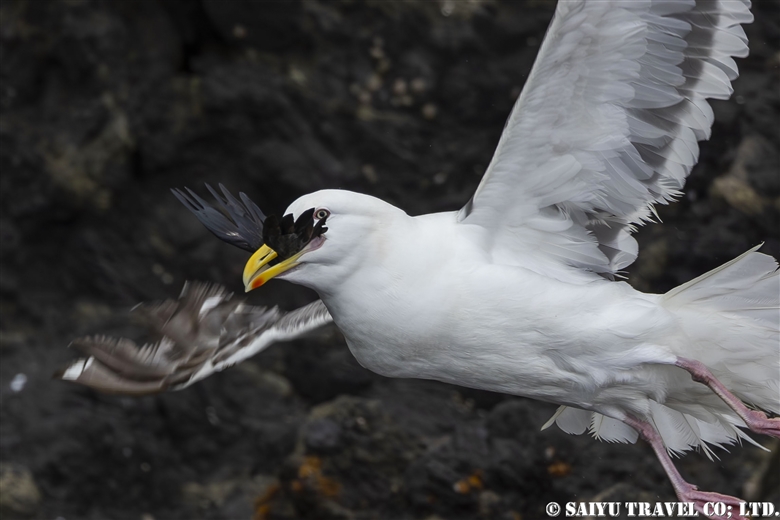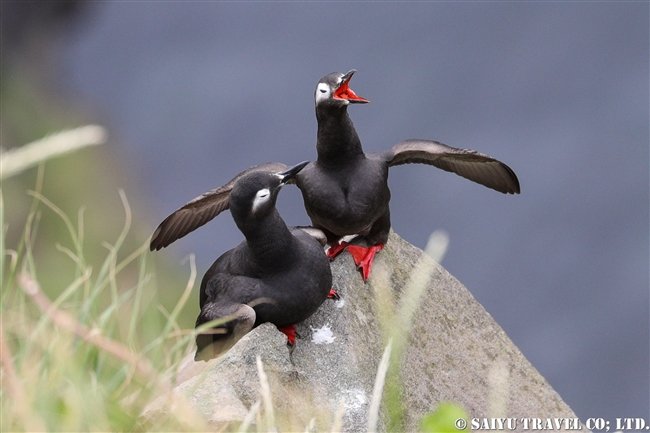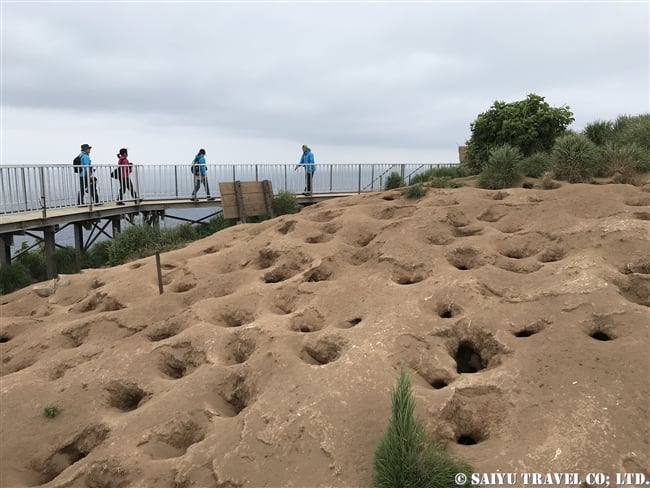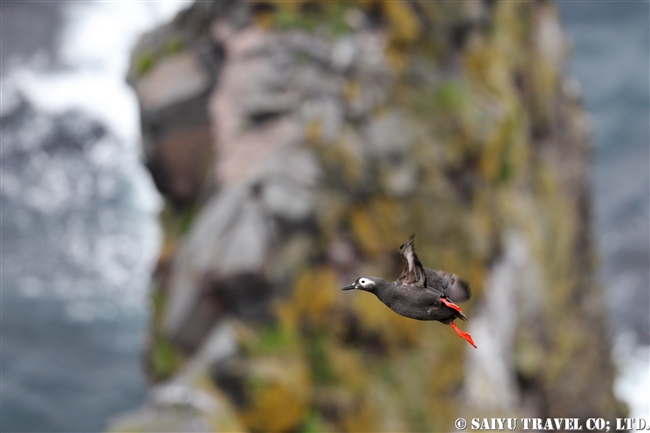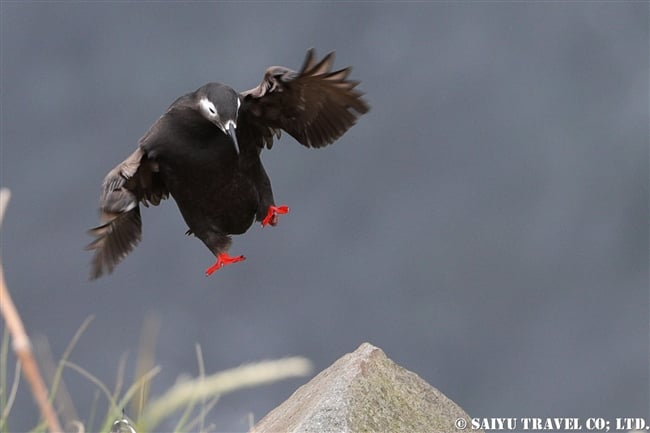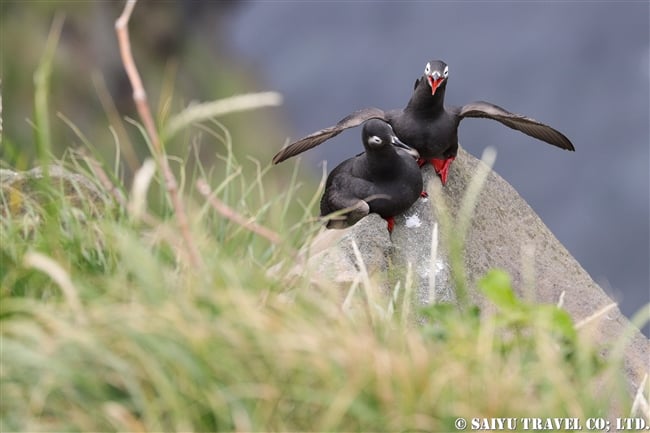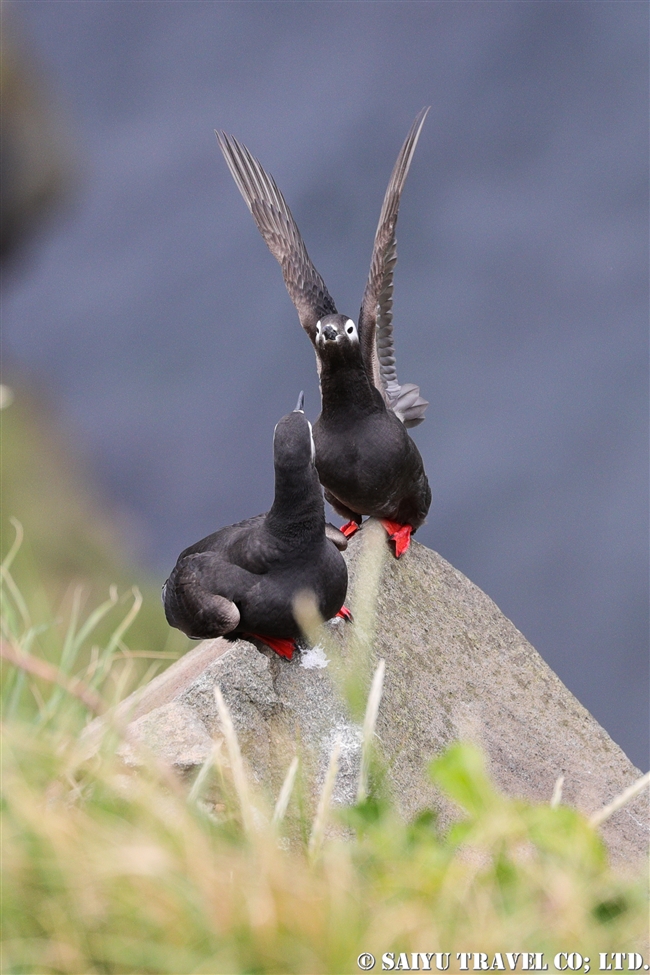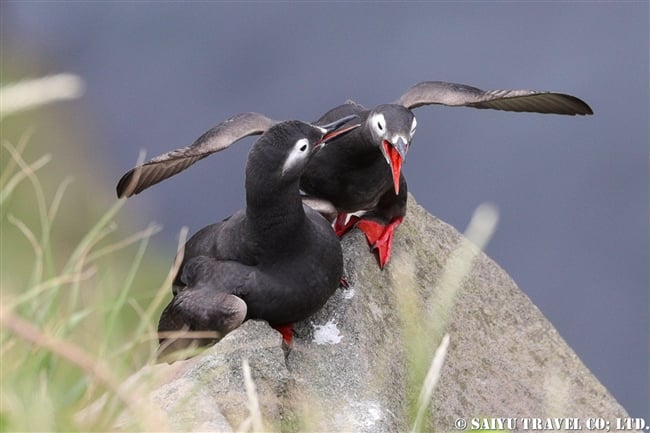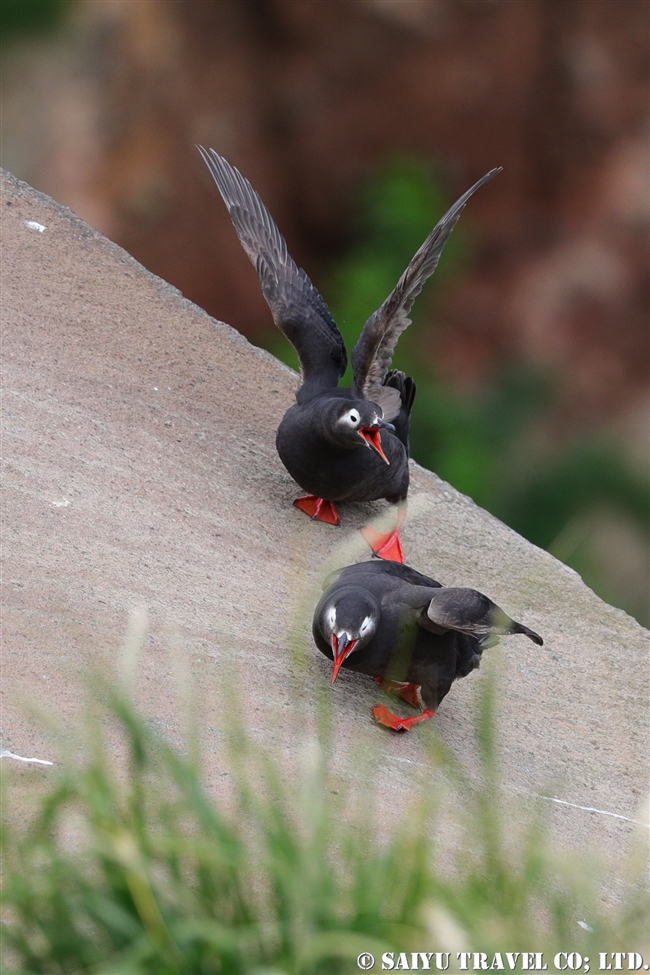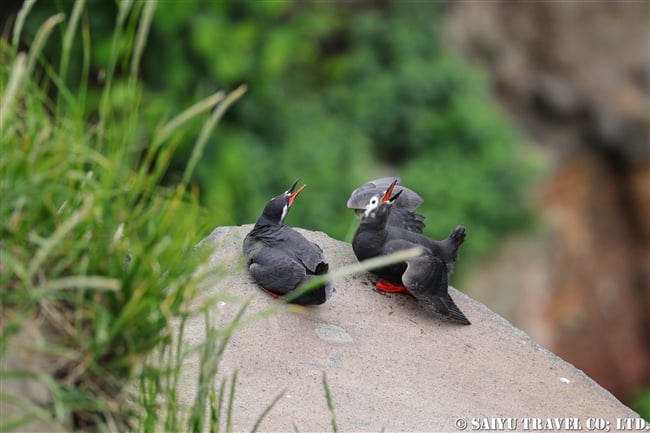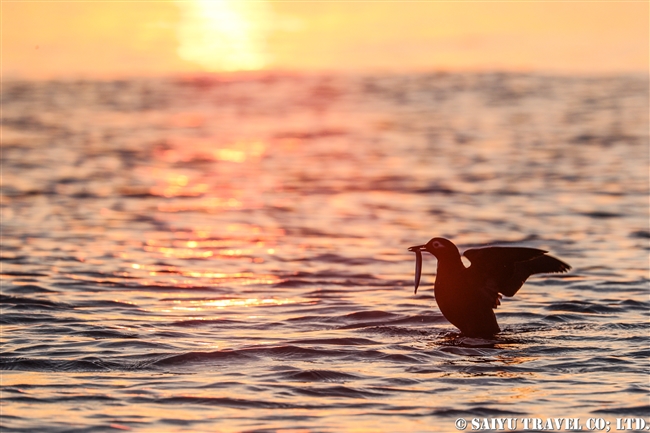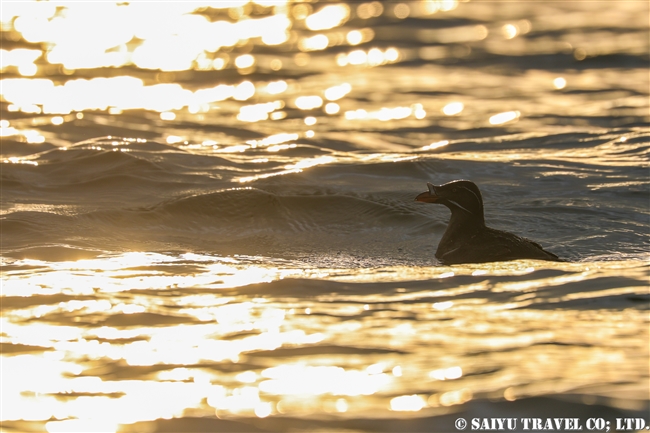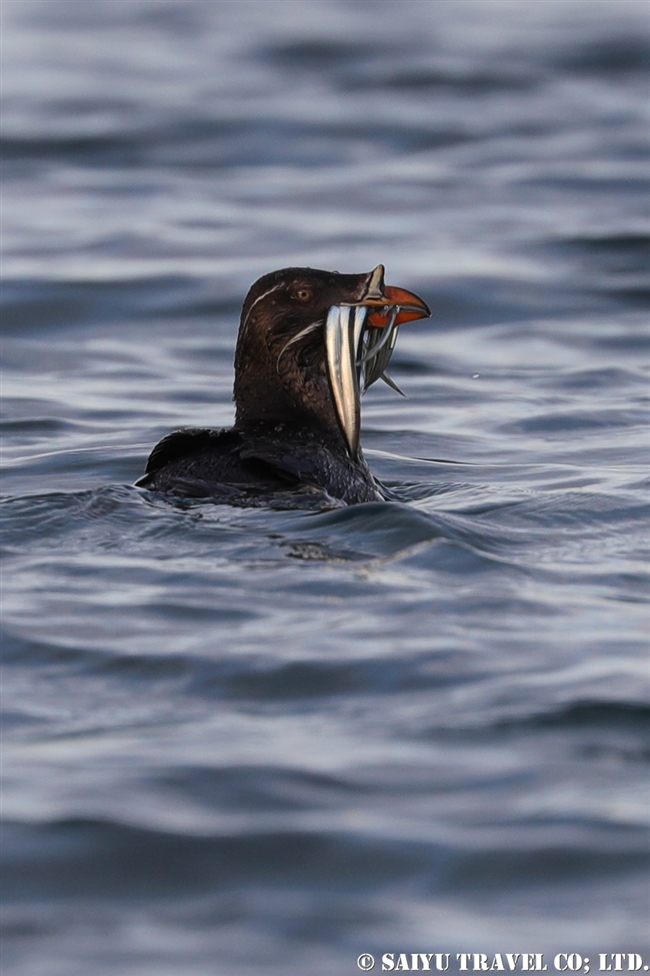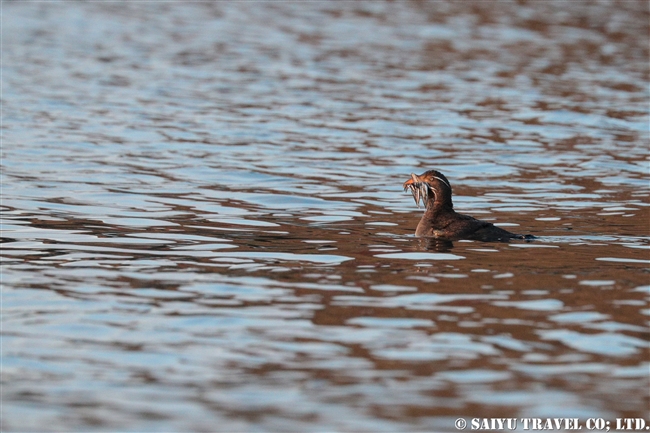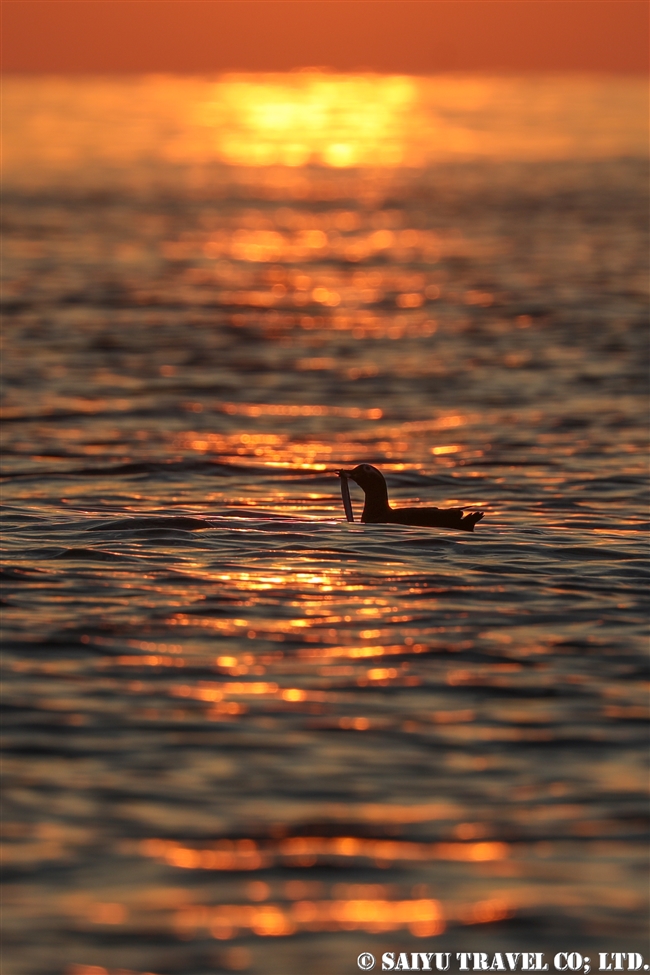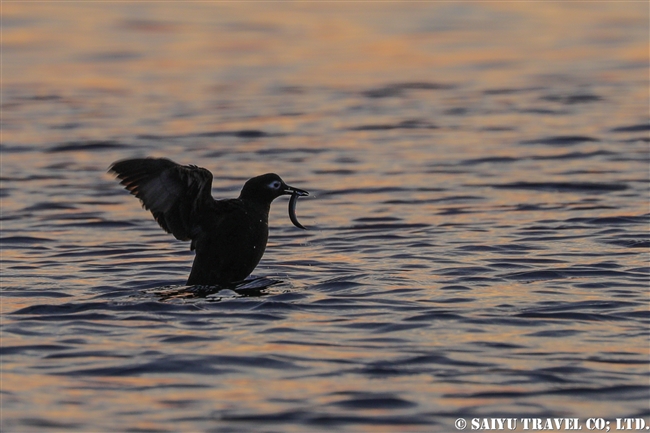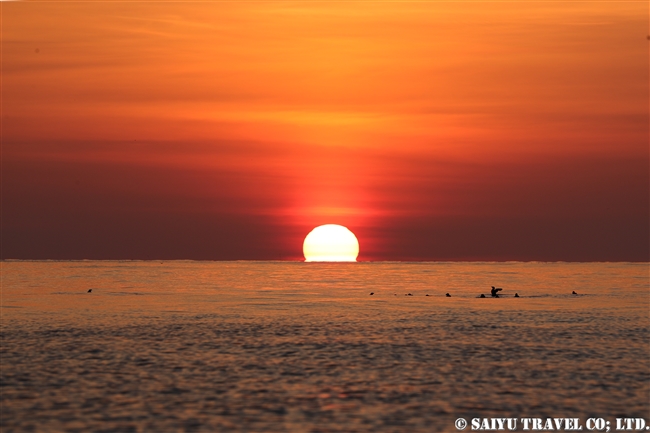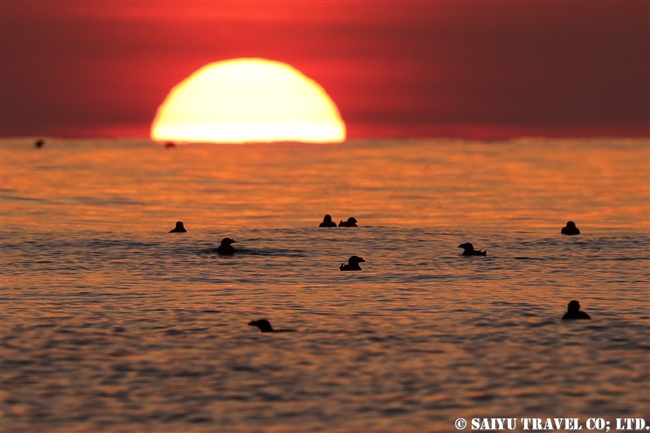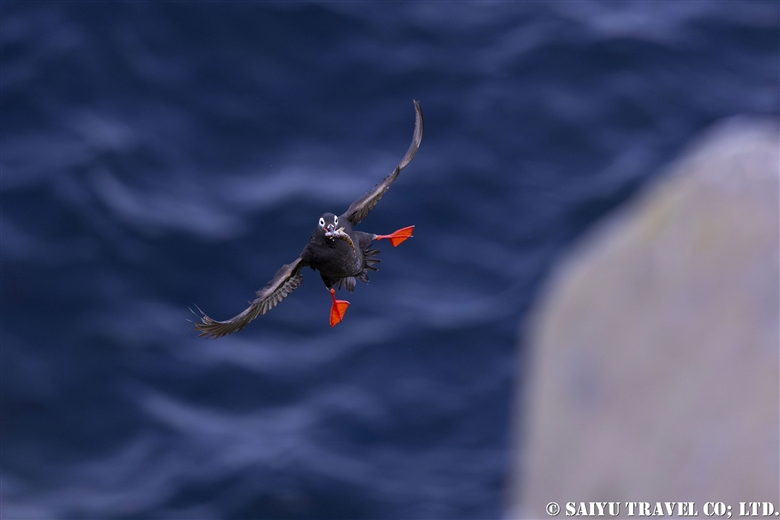
>For information and tours of Teuri Island, click here!
The Spectacled Guillemot: A Timeless Favorite among Teuri Island’s Seabirds
The Spectacled Guillemot, known as “ケイマフリ” (Keimafuri) in Japanese, holds an unwavering popularity on Teuri Island. Its name is derived from the Ainu word “ケマフレ” (Kema-fure), meaning “red-legged.”
True to its name, the Spectacled Guillemot not only possesses red legs but also has a similar crimson color inside its mouth. While observing its courtship behavior on rocky shores, it display its legs while opening its mouth to court potential mates, they leave viewers mesmerized by its stunning beauty.
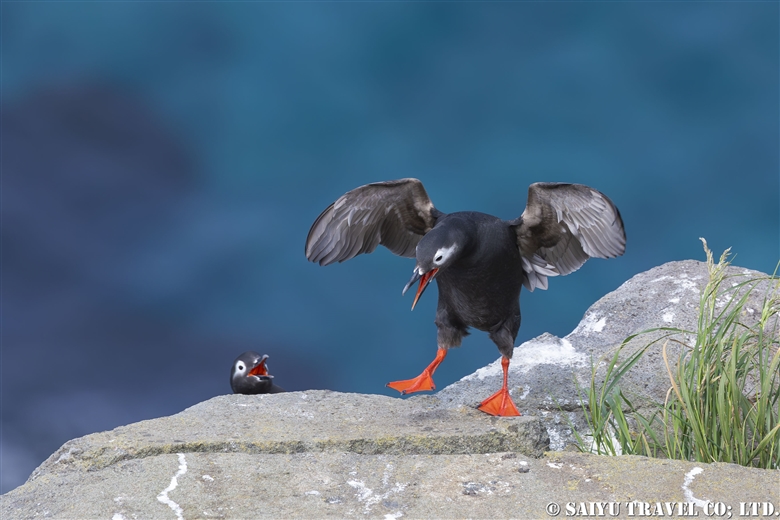
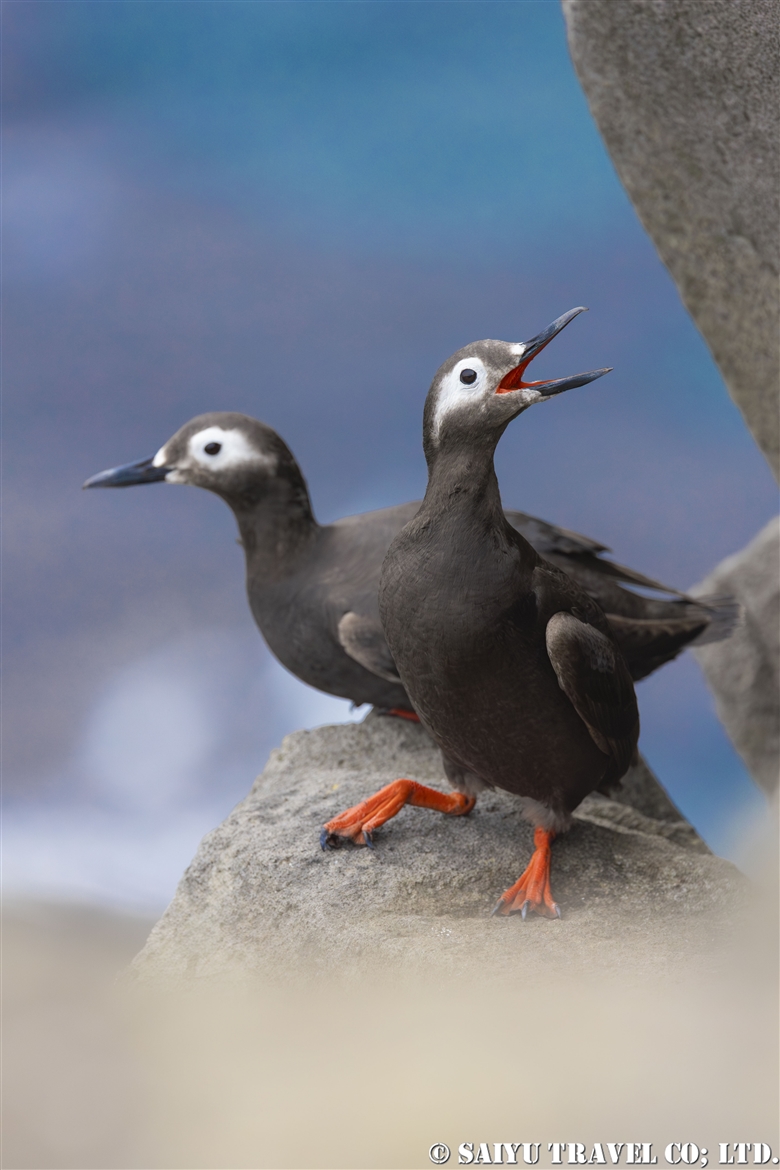
Compared to other Alcidae birds inhabiting Teuri Island, the Spectacled Guillemot excels at taking off from the water’s surface. It performs a skillful take-off by running on the water while building momentum before finally lifting off. (On the other hand, the other two species, Common Guillemot and Rhinoceros Auklet, perform take-offs by half-swimming and flapping their wings on the water’s surface.)










The sight of “Teuri Blue,” the mesmerizing color of the sea, combined with the radiant red legs of the Spectacled Guillemot, is incredibly beautiful. Many visitors come to Teuri Island solely to witness this enchanting spectacle.
Furthermore, during the latter part of the breeding season, around late June, you can also observe the Spectacled Guillemots carrying food in their beaks to feed their chicks. This heartwarming sight showcases the dedication and care these birds have for their offspring, adding to the enchanting experience of witnessing their behavior on Teuri Island.
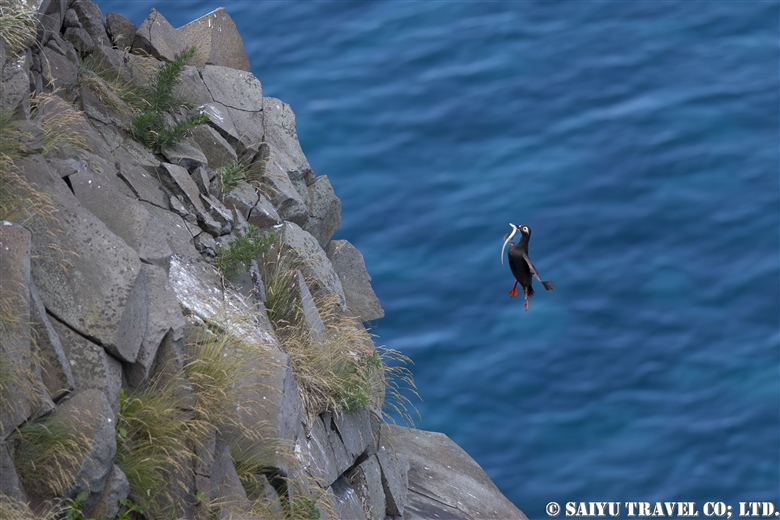

The diverse range of prey that the Spectacled Guillemot carries, such as larval fish and small sculpins, adds to its allure and charm. Observing these graceful birds transporting various types of food is truly captivating.
It’s wonderful to hear that Terasawa Takaki, a photographer residing on Teuri Island, has been so captivated by the charm of the Spectacled Guillemot that he created a Japanese sake named after them and even adorned his own boat with illustrations of the bird. His passion for these birds is truly inspiring.
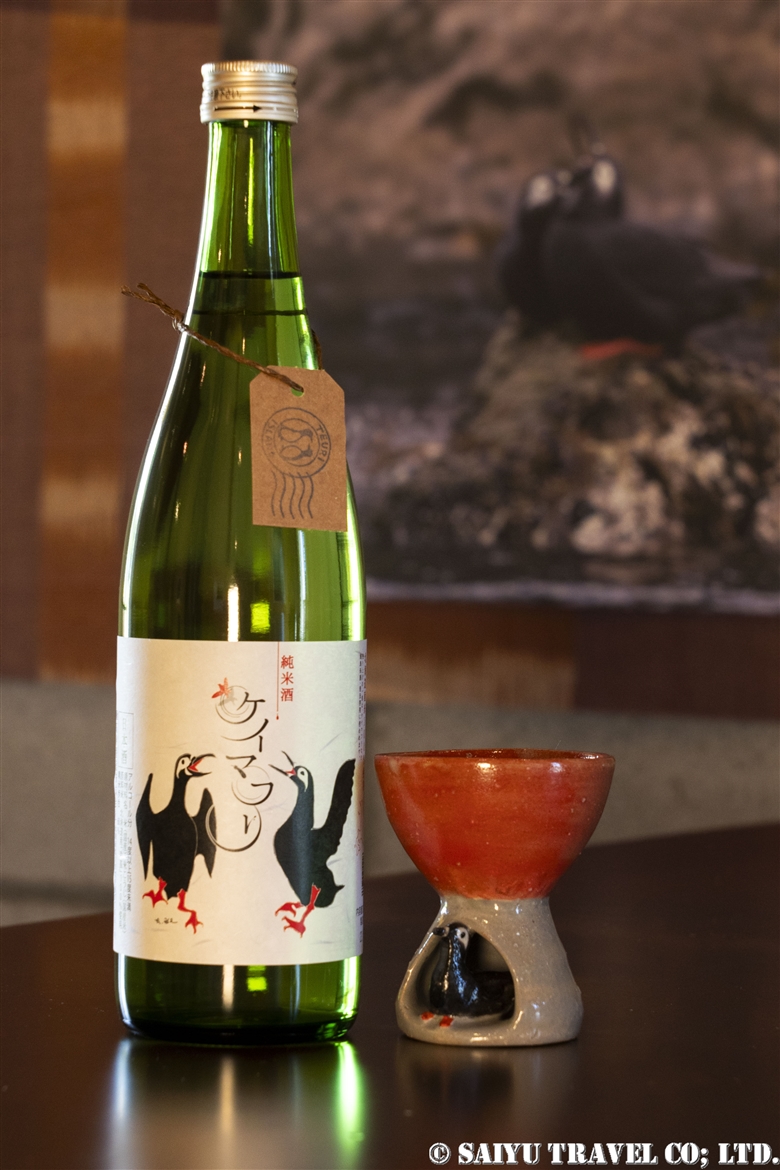
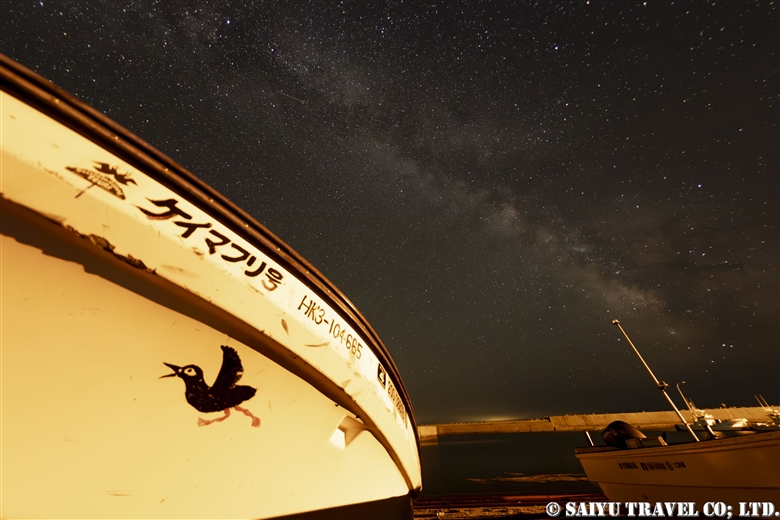
I wholeheartedly agree with the invitation for everyone to come and visit Teuri Island to experience the magic of meeting the Spectacled Guillemots in person. It is undoubtedly an unforgettable experience that will leave visitors in awe of the island’s natural beauty and its remarkable avian residents.
Image & text : Wataru HIMENO
★ Visit our web site of TEURI ISLAND.
★Contact us to make arrangements for photographing seabirds on Teuri Island and Wildlife of Japan.
★Wildlife videos are also available on Youtube – we have the playlist as well.
Tags: Teuri Island, #birdphotographyhokkaido, Rhinoceros Auklet, Birds Photography Hokkaido, Spectacled Guillemot, #spectacledguillemot, Teuri, ケイマフリ, Keimafuri, Bird photography in Japan, Wildlife of Japan, Birds photography, Birds of Hokkaido, Sea birds, Birds of Japan, #birdsofjapan, #teuriisland




